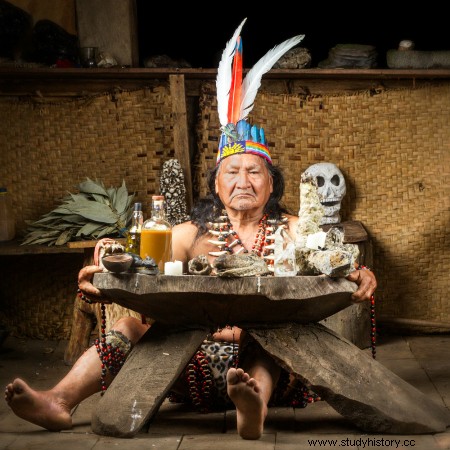
Because tea has been produced for a long time, from Santo Daime appears in the history of different cultures and religions, taking on other names such as ayahuasca , caapi , yajé and wine of God . Since that time, the preparation and ingestion of this drink have been associated with the performance of religious rituals of a different nature. For the preparation of the drink, substances collected from the queen herb are mixed and dovine-caapi , which undergo an effusion producing the substance.
According to some scholars, the first reports on the use of this tea come from the habit, as early as 1000 BC. and 500 BC, of some Indians from the Peruvian Amazon who mixed vines and leaves to prepare drinks. In the colonial period, Portuguese and Spaniards observed this indigenous habit as some kind of hallucinogenic experience. Because of the religious and cultural difference, the European conquerors did not understand the liturgical application of that type of drink.
Drinking Condemnation
Still in the 16th century, the Jesuit priests who carried out the work of catechization in the Amazon region consumed the prepared tea and, soon after, reported their complete disapproval of the use of that type of drink. . In the year 1616, agents of the Holy Inquisition in America reported the same tea, condemning its consumption because they considered such practice related to the development of magical activities or of a demonic nature .
Even with the reprimand, it is noted that the drink's consumption in religious rituals was preserved and its recipe practically remained unchanged. It was only in the contemporary period that ayahuasca was commented on again in historical records. In the year 1858, the Ecuadorian geographerManuel Villavicencio carried out a detailed description of the effects that tea has. Shortly before, the English botanist R. Spruce tried the preparation and opened the way for new studies with the plants used to be developed.
In the 20th century, the consumption of ayahuasca determined the development of new religions that went beyond the scope of the Amazonian indigenous communities. In 1913, the rubber tapper Raimundo Irineu Serra came into contact with the drink and, from the reading of his own experience, founded the Igreja do Santo Daime . Decades later, another rubber tapper named José Gabriel da Costa organized a new religious denomination, known as União do Vegetal .
Permitted use for religious purposes
Today, there are other religions that use Santo Daime tea to promote spiritual experiences. Many of the practitioners of these religions embody concepts established bySpiritism and the Afro-Brazilian religions . In the vast majority of cases, the ingestion of the preparation has a specific spiritual function and cannot be carried out in a random or banal way. Since 1992, the Federal Narcotics Council authorizes the use of tea for religious purposes.
